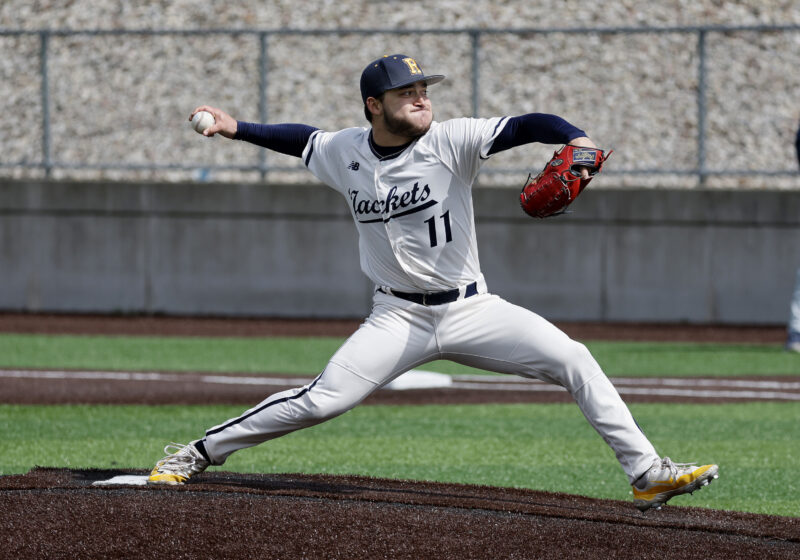
Bow Young Kim, Staff Photographer
Developer advocate for The New York Times and alumnus Brad Stenger ’90 presented a talk entitled “Computational Journalism” on Tuesday, Jan. 31 to discuss the future of journalism at a time when print media is considered old-fashioned due to an increase in news-sharing technologies.
The audience at the event was there mainly for the journalistic reputation of the Times. After Stenger surveyed the audience, he asked for a show of hands of who was there for journalism and who was there for the computational aspect of the talk. However, Stenger had much more to offer than purely journalistic information. He fused his own interests of science and writing into his discussion, which he developed as a double major in mechanical engineering and English at UR. Though the combination may have caught some audience members off guard, his presentation proved that science and journalism, especially in today’s world, are more alike than they might originally seem.
Rather than discuss his own path to the Times, he started out his talk in the Welles-Brown Room by discussing two California Institute of Technology postdoctoral scholars Matthew Meselson and Franklin Stahl. Meselson’s and Stahl’s claim to fame came in the late 1950s when they experimented with DNA replication. As with any scientific experiment, these scientists needed to repeat the process multiple times to ensure accuracy and to fully understand the way DNA replicated.
At this moment in his discussion of science Stenger turned his scientific anecdote into an in depth analogy of the news industry — a place of experimentation.
“I wanted to talk about experiments first because at this point in time the news [industry] is an experiment,” Stenger said, referring to the way news reporting has changed in the age of digital media when the general public has the technology to make and transmit the news themselves.
With the successes of social media websites like Facebook, Twitter and YouTube, user-generated content has exploded onto the Internet, threatening the necessity of print media. Rather than shy away from this reality, Stenger brought it to the forefront by playing clips of Andrew Rossi’s 2011 documentary “Page One: Inside the New York Times.” The fear that the Times would be rendered obsolete was real, according to Stenger, but in understanding their weaknesses against the Internet the newspaper business has bounced back.
“[‘Page One’] is a pretty accurate representation of what was going on then,” Stenger said. “But I’m happy to say that now The New York Times is far more confident in its situation.”
His own role at the Times incorporates the urgency that print media has to stay relevant, as a developer who uses computational journalism to marry the process of getting the news out with more analytical work needed to identify how people today use the news.
With new ways of consuming the news, Stenger reiterated the power of experimentation. Currently the Times has been looking into new ways to incorporate video and gaming into the way they present the news as a strategy to keep up with technology and trends. With technologies expanding so quickly, Stenger related a few words of advice to budding scientists, journalists and those who find a way to combine their interests as he did: Break new ground, be fearless and always be ready for new opportunities.
Olfano is a member of the class of 2012.

